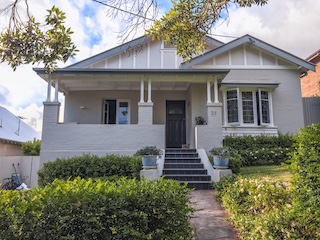Bald Hills suburb profile
Bald Hills is a peaceful suburb located in the northern part of Brisbane, approximately 20km from the CBD. Known for its family-friendly atmosphere and community spirit, Bald Hills offers a mix of residential options, including traditional Queenslander homes and modern developments. The suburb is well-served by public transport, with a train station providing easy access to the city. Bald Hills is also home to several parks and recreational areas, including the Tinchi Tamba Wetlands, which offer opportunities for birdwatching and outdoor activities. Its blend of suburban tranquility and accessibility makes Bald Hills a desirable location for families and commuters.
Bald Hills property market performance
Current median dwelling price$763,500Past 3 months
Property growth+13.0%Past 12 months
Bald Hills has experienced notable growth in its property market over the past 12 months. House values have increased by 9.5%, with the current median house price reaching $905,000. Although the median unit price is not available, unit values have seen a significant rise of 14.3%, indicating strong demand in this segment.
Sales activity in Bald Hills has been moderate, with 22 houses and 4 units sold over the last 12 months. Houses are selling relatively quickly, with a median of 31 days on the market, while units are moving even faster at 21 days, suggesting a competitive market for units.
The rental market in Bald Hills has also shown positive trends, with house rents increasing by 4.8% and unit rents rising by 7.8% over the past year. The average rent for houses is $650, while units average $431, reflecting a healthy demand for rental properties in the area.
| Houses | Units | |
|---|---|---|
Median price Past 3 months | $911K | N/A |
Change in value Past 12 months | 10.0% | 15.9% |
Sold Past 3 months | 22 | 3 |
Median days on market Past 12 months | 31 | N/A |
Average rent Past 12 months | $650 | $430 |
Change in rent Past 12 months | 3.5% | 7.5% |
5 year median price trend for houses and units
Bald Hills demographics
Bald Hills, located in the northern suburbs of Brisbane, is a family-friendly area known for its peaceful environment and community-oriented lifestyle. With a population of 7,000 and a median age of 36, it attracts a mix of young families and established residents who appreciate its suburban charm and proximity to the city. The suburb's median total household income of $1931 per week reflects a comfortable standard of living, making it an appealing choice for those seeking a balance between work and family life.
The housing landscape in Bald Hills is predominantly owner-occupied, with 26.9% of properties owned outright and 47.0% owned with a mortgage. This indicates a stable community with a strong sense of home ownership. Rental properties make up 26.0% of the housing market, providing options for those who prefer flexibility. The suburb's family-oriented nature is evident, with 45.0% of households being couple families with children, and 35.6% being couple families without children, highlighting its appeal to both growing families and couples.
Bald Hills offers a welcoming environment with a variety of local amenities, including parks, schools, and shopping centers, catering to the needs of its residents. The presence of one-parent families, making up 17.8% of the community, adds to the suburb's diverse family dynamics. With its blend of suburban tranquility and accessibility to Brisbane's urban offerings, Bald Hills is an attractive option for those looking to enjoy a relaxed yet connected lifestyle.
Bald Hills infrastructure, key developments and investment opportunities
Bald Hills is experiencing several developments that could impact its property market. The upcoming University of the Sunshine Coast campus in nearby Petrie, set to open in 2020, is expected to drive demand for housing in the area. Additionally, the suburb's proximity to the Pine River and abundance of green spaces, including the Tinchi Tamba Wetlands Reserve, continue to attract families and nature enthusiasts.
Recent infrastructure improvements, such as upgrades to local parks and the Personalised Public Transport (PPT) service, have enhanced livability in Bald Hills. The suburb's strategic location, with easy access to major roads like the Bruce Highway and Gateway Motorway, as well as regular train services, makes it attractive for commuters. These factors, combined with ongoing residential developments and the suburb's family-friendly atmosphere, are likely to sustain property demand and potentially drive price growth in Bald Hills.
Bald Hills rental market trends
The rental market in Bald Hills has experienced moderate growth, with house rents increasing by 4.8% over the past year to $650 per week, while unit rents have seen a more significant rise of 7.8% to $431 per week. This steady growth reflects the suburb's appeal, offering a balanced mix of affordability and convenience for both renters and investors.
Suburbs near Bald Hills
Some popular suburbs near Bald Hills include:
How does Bald Hills compare to nearby suburbs?
- Median house prices: Bald Hills’s median house price is 7.2% higher than Strathpine’s.
- Median unit prices: Bald Hills’s median unit price is 6.0% higher than Brendale’s.
- House price growth: Over the past 12 months, house prices in Bald Hills have grown 1.4% higher than in Carseldine.
- Unit price growth: Over the past 12 months, unit prices in Bald Hills have grown 1.3% higher than in Bracken Ridge.
- Selling speed for houses: Properties in Bald Hills are selling 40.4% faster than in Bridgeman Downs.
- Investment considerations: In Bald Hills, the rental yield for house is 4.3% lower than the Brisbane average, while the rental yield for units is 30.3% lower.
- House price growth: Over the past 12 months, house prices in Bald Hills have grown 20.8% lower than the average rate of growth across Brisbane.
- Unit price growth:Over the past 12 months, unit prices in Bald Hills have grown 0.3% higher than the average rate of growth for units across Brisbane.

